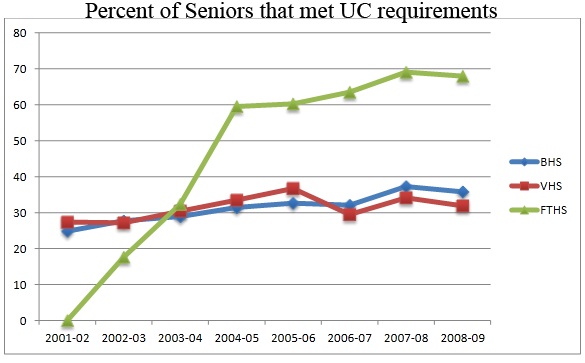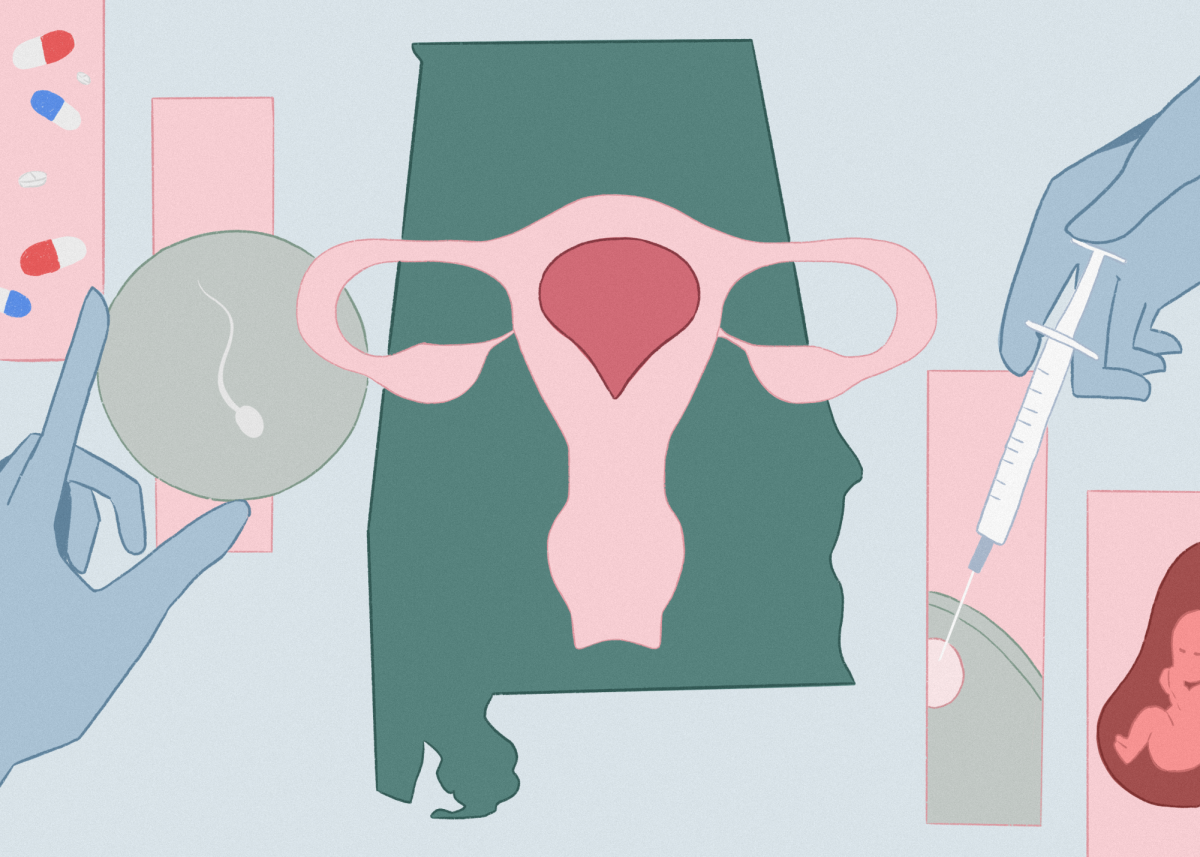
With an A-G requirement completion rate of 68%, Foothill prepares graduates for four-year universities at almost double the rate of the state and of the other comprehensive high schools in the Ventura Unified School District.
About 35% of California high school graduates take the full load of state-approved college-preparatory courses in history, math, science, English and elective courses, known commonly as A-G requirements.
Over the last seven years, Foothill has increased its percentage of seniors who meet the requirements by 50%, up from about 2003 when just 18% graduated UC-ready.
Ventura’s other two comprehensive high schools report 30-35% of students meet the requirements:
- Buena High School increased by 8.1% over seven years
- Ventura High School by 4.5%. These figures represent the most recent data available.
Ventura Unified’s assistant superintendent Jeff Chancer presented the information to the school board Jan. 11.
Board members voiced concern at the lower rates of A-G completion at Ventura and Buena.
“That worries me,” board president Barbara J. Fitzgerald said regarding Ventura High School’s plateau. “That really worries me.”
“Default curriculum” is preparing more students for college entrance
Foothill’s principal Joe Bova explained one reason for Foothill’s high completion rate.
“The most important aspect of our school’s rate of meeting A-G is that our default curriculum is college prep,” Foothill principal Joe Bova said. “The school was founded on the premise of being a college prep school.”
The other major contributing factor to Foothill’s success, he said, is the atmosphere of the school itself.
“The idea of going to a four-year university is promoted and encouraged school wide,” Bova said.
Bova said he is not satisfied with a 67.9% completion rate, and he and the Foothill staff have set a goal for above 70% completion.
One reason for the concern about students attending college is that researchers predict that 37.6% of newly created jobs in 2012 will require a bachelor’s degree or higher.
“Completing the requirements and a degree in 2011 is as important as getting a high school degree was 30 to 40 years ago,” Bova said.
The global economy is moving away from a manufacturing economy to a service and communications economy, Bova noted. This will require more highly skilled jobs than ever before.
“I don’t believe college is for everyone,” Chancer told board members. “But with times changing, the skills required are the same for those going to college and those not.”
Baby boomers leaving behind highly skilled jobs and an unstable global economy
Two other factors are greatly impacting the changing economy. Globalization and the beginning of baby boomers retiring are transforming the workforce. Retiring baby boomers will leave behind highly skilled jobs.
“If students are not going to college, they need to make sure they have what they need to enter the workplace,” Chancer said.
Anyone who does not attain a college degree, Bova stated, is “open to the very unstable nature of the global economy.”
“Somebody without a college degree will be at more of a competitive disadvantage than they’ve ever been,” he added.
Unfortunately, the recent budget cuts that Ventura Unified and districts from across the state have been forced to take have greatly affected universities.
“There are a lot less spaces for kids,” Bova said. Also, hard economic times are forcing students to choose community colleges in order to save money.
According to Chancer, the district continues to get classes A-G approved so that students will have a better chance of completing the requirements, but getting accepted and paying for a four-year university experience is getting tougher.
Edited January 25, 8:40 a.m., to improve clarity and define A-G requirements.

















